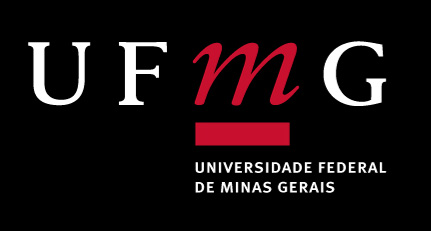Análise da distribuição de injeção de plumas de queimadas na atmosfera na América do Sul
DOI:
https://doi.org/10.35699/2237-549X.2018.19218Keywords:
Atmosphere, MODIS, Burning SmokeAbstract
Burning releases trace gases and aerosols into the atmosphere, factors that modify biogeochemical cycles, as well as their energy balance, leading to local and regional climate changes, resulting, for
example, from deforestation of natural vegetation for the opening of areas intended for livestock and agriculture. Based on this fact, to determine the
injection heights of these biomass burning plumes over South America for 2016 and to evaluate the impacts on long range transport of these pollutants,
the images of the Multiangle Imaging Spectro Radiometer (MISR) sensor were analyzed. aboard the TERRA Satellite, with a resolution of 275 m at nine angles, ranging from 0° nadir to 70° outside nadir.
With the MISR INteractive eXplorer (MINX) software, the plumes heights were processed, allowing the creation of multitemporal files. Subsequently, from
a program originated in IDL/ENVI, the data of interest was obtained, such as the location, the fire radiative power and the injection height of each plume. After the initial processing, was performed
the data conversion and insertion into Geographic Information Systems (GIS). In this context, it was found that in the South American region the major source of pollutant emissions is the seasonal
burning in the Amazon region. Thus, this ability to investigate feather geometry and dynamics is becoming increasingly important for climate and air quality studies, where they require greater knowledge of aerosol injections and their location within the atmosphere
Downloads
References
ANDREAE, M. O.; ARTAXO, P.; FISCHER, H.; FREITAS, S. R. Transport of biomass burning smoke to the upper troposphere by deep convection in the equatorial region. Geophysical Research Letters, v.28, n.6, p.951-954, 2001.
ARANTES, A.E.; FERREIRA, L.G.; COE, M.T. The seasonal carbon and water balances of the Cerrado environment of Brazil: Past, present, and future influences of land cover and land use. ISPRS Journal of Photogrammetry and Remote Sensing, v. 117, p. 66-78, 2016. ISSN 0924-2716, http://doi.org/10.1016/j. isprsjprs.2016.02.008.
ARTAXO, P.; SETZER, A. Emissões de material particulado de queimadas na Floresta Amazônica e no Cerrado. Subsídio Técnico ao Documento Básico do I Seminário sobre Incêndios Florestais e Queimadas. Brasília: IBAMA, abril de 1992. 23p.
CARDOZO, F. S.; PEREIRA, G.; SHIMABUKURO, Y. E.; MORAES, E. C. Analysis and Assessment of the Spatial and Temporal Distribution of Burned Areas in the Amazon Forest. Remote Sensing, v. 6, p. 8002-8025, 2014.
COCHRANE, M. A. Fire and fire ecology: Concepts and Principles. In: Tropical Fire Ecology, Climate Change, Land Use and Ecosystem Dynamics, Springer: Chichester, UK, pp. 60-97, 2009.
COUTINHO, L.M. et al. O Bioma do Cerrado e o Fogo. Revista do Instituto de Estudos Avançados da USP, 50 pp., 2002.
FEARNSIDE, P. M.; RIGHI, C. A.; GRAÇA, P. M. L. A.; KEIZER, E. W. H.; CERRI, C. C.; NOGUEIRA, E. M.; BARBOSA, R. I. Biomass and greenhouse gas emissions from land-use change in Brazil’s Amazonian ‘‘arc of deforestation’’: The states of Mato Grosso and Rondônia. Forest Ecology and Management, n. 258, p. 1968-1978, 2009.
FOOD AND AGRICULTURE ORGANIZATION OF THE UNITED NATIONS. State of the World’s Forests. Rome: 2007, 2007.
FREITAS, S. R. et al. Emissões de queimadas em ecossistemas da América do Sul. Estudos Avançados, v. 19, n. 53, p. 167–185, 2005.
ICHOKU, C.; KAUFMAN, Y. J. A method to derive smoke emission rates from MODIS fire radiative energy measurements. IEEE Trans. on Geosc. & Rem. Sens., v. 43, n. 11, p. 2636-2649, 2005.
KAUFMAN, Y.J.; REMER, L.; OTTMAR, R.; WARD, D.; RONG-R, L.; KLEIDMAN, R.; FRASER, R.; FLYNN, L.; MCDOUGAL, D.; SHELTON, G. Relationship between remotely sensed fire intensity and rate of emission of smoke:
SCAR-C experiment. In: Levine, J. (Ed.). Global biomass burning. Maryland: MIT Press, 1996. p. 685-696.
KIM, B.M.; SEO, J.; YOUNG KIM, J.; LEE, J.; KIM, Y. Transported vs. local contributions from secondary and biomass burning sources to PM2.5. Atmospheric Environment, v. 144, p. 24-36, 2016. ISSN 1352-2310, http://doi.org/10.1016/j. atmosenv.2016.08.072.
HERRERA, G.V. Mexican forest fires and their decadal variations. Advances in Space Research, v. 58 (10), p. 2104-2115, 2016. ISSN 0273-1177, http://doi. org/10.1016/j.asr.2016.08.030.
LAVOUE, D.; LIOUSSE, C.; CACHIER, H.; STOCKS, B.J.; GOLDAMMER, J.G. Modeling of carbonaceous particles emitted by boreal and temperate wildfires at northern latitudes. J. Geophys. Res., v. 1035, p. 26871-26890, 2000.
MARENGO, J.A.; NOBRE, C.; SALAZAR, L.F. Regional climate change scenarios in South America in the late XXI century: Projections and expected impacts. Nova Acta Leopold, v. 112, p. 251–265, 2010.
Downloads
Published
Versions
- 2022-04-15 (2)
- 2020-02-05 (1)
How to Cite
Issue
Section
License
Copyright (c) 2018 Revista Geografias

This work is licensed under a Creative Commons Attribution 4.0 International License.
Os artigos desta revista obedecem a licença Creative Commons — Attribution 4.0 International — CC BY 4.0









